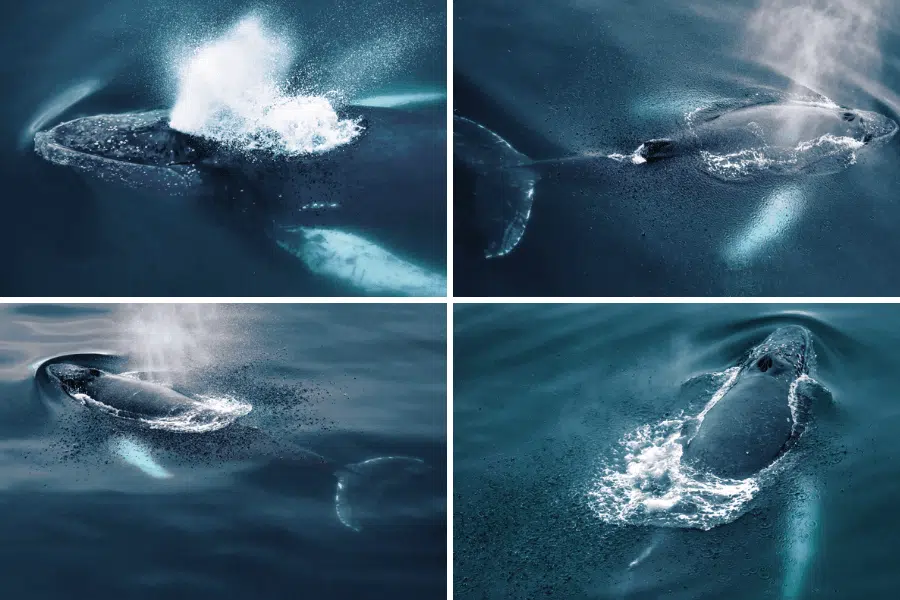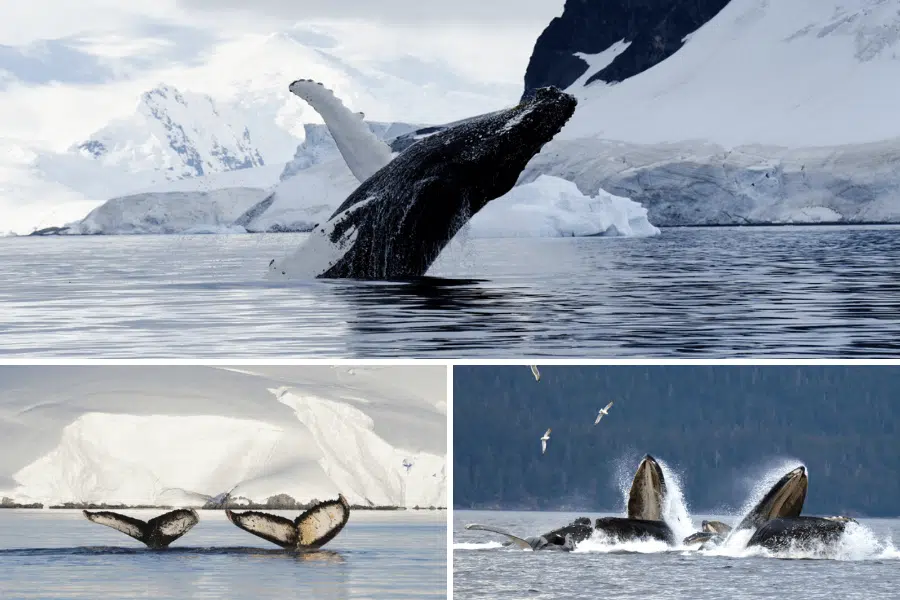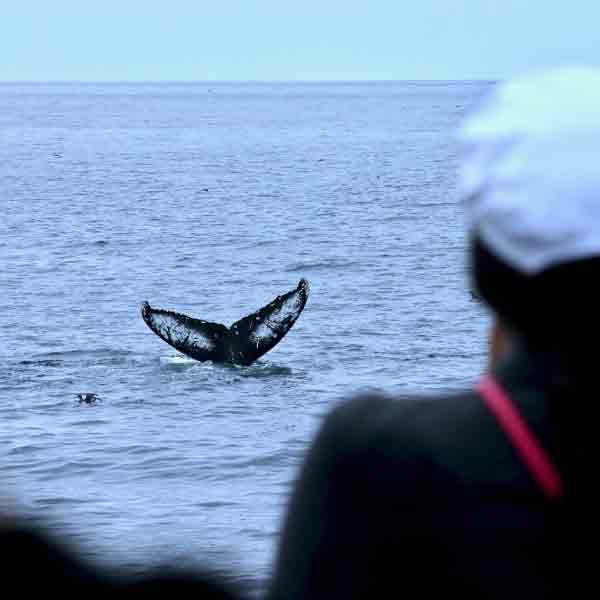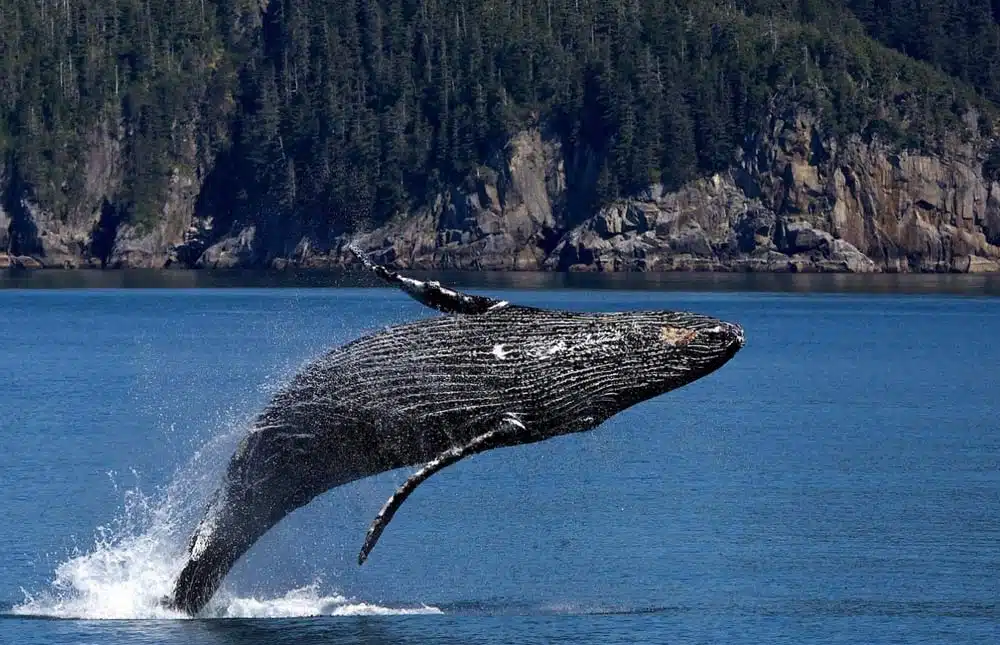Our advice for a successful magical encounter
A unique experience, a gift from Mother Nature. It is possible to witness the majestic ballet of cetaceans on the surface, but a minimum of preparation is required. Here’s some advice on how to get the most from timeless moments in contact with these fascinating creatures.
Where can I see whales?
The big family of cetaceans travels all the waters of the world, but only a few places offer chances of a definite sighting. And on top of that, these areas are often ideal for watching whales and enjoying breath-taking vistas in the background at the same time. The biggest concentration of migrating humpback whales in the world can be found not far from the sandstone cliffs and horizontal falls that make up the stunning Kimberley mountains in Australia, for example.
Minke whales (or “little rorquals”) regularly frequent the Virgohamna and Magdalena Fjords off Svalbard in Norway in the warm seasons. More vast than that, the mouth of the Saint Lawrence River and surrounding areas in Quebec are the favourite haunt of a number species, including the fin whale and the impressive blue whale. The Saguenay Fjord and Tadoussac National Parks are particularly likely locations for seeing a large number of cetaceans at the same time, as they go to feed there.
And, finally, whales are also the star attraction for certain ports of call and boat trips in the Southern Hemisphere and off Easter Island in the Pacific.

© PONANT / Morgane Monneret
Which whales can you see?
Depending on the chosen destination, a number of species can come close to a vessel or coastline. Humpback whales are the most well-known, recognisable by their balloon-shaped spout and black back and their natural tendency for breaching.
You can tell minke whales apart from others by their extremely curved dorsal fin and their size, which is always under ten metres. The biggest living creatures on the planet, blue whales can send a spout to six metres up in the air: hard to miss! A little smaller (around twenty metres), the fin whale also has an impressive spout, but has a darker back and curved fin.
In the Southern Hemisphere, you might encounter right whales, which are distinctive for swimming very slowly and having a v-shaped spout.

© Studio PONANT
What is the best way to see them?
Seasoned whale watchers will tell you: the best thing you can bring with you if you want to see whales is patience. That being said, there are certain techniques you can apply when preparing for an encounter with these marine creatures, as they are famous for being a shy. The wisest advice is to keep your eye on the horizon, so that you can identify the slightest sign of a spout.
As soon as you catch sight of the water column, grab your binoculars: it means there should be whales about. Depending on the weather conditions and the observation point (from the land or on the ocean), in addition to binoculars, it’s a good idea to take clothing to protect you from the wind and stop you getting soaked too quickly.
Whatever the circumstances, it’ll be a big thrill, as these majestic beasts look like they are just skimming the water below; their enormous size is in total contrast to the lightness and poetry of their movements.

© Studio PONANT
Take it further…
Read: Guide Delachaux: Whales, Dolphins and Seals by Hadoram Shirihai. A must for cluing yourself up on the distinctive signs and characteristics of whales, porpoises, dolphins, orcas and sperm whales.
Watch: the documentary Sur les traces des mégaptères by Jérôme Grenèche, who follows a team of scientists wanting to protect and study humpback whales, available free on the Sciences et Avenir web site and YouTube.
Listen to: the albums of French artist Rone (Nakt and Mirapolis have the strange particularity of attracting cetaceans at sea, as demonstrated by youtuber The Sailing Frenchman and yachtsman Patrick Laine).
Whale sanctuaries
There are around ten of them throughout the world: some marine national parks and protected areas are called “whale sanctuaries”. They are areas in North America, the Southern Hemisphere and the Indian Ocean where aquatic fauna is not allowed to be disturbed. Italy, France and Monaco have also joined forces to create the Pelagos Sanctuary, covering an area extending from the Côte d’Azur to Sardinia and the North West coast of Italy. They do not all come under the same management, but they are all in the fight against whale hunting and the consequences of pollution on cetacean habitats.

Encounter the whales with PONANT
Enjoy this unique experience during a luxury cruise.



